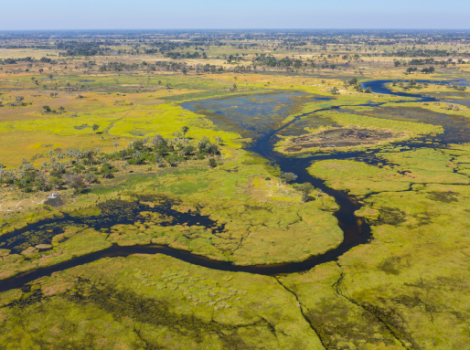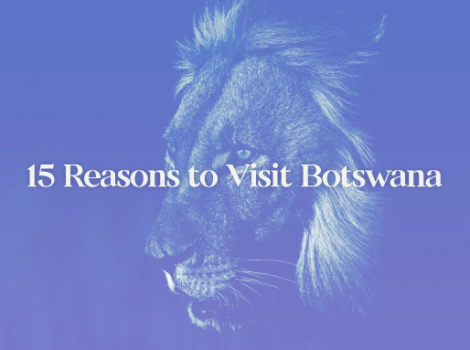Get up close with the wildlife of the Okavango Delta in new 360 video. No special equipment required.
Botswana is home to nearly half the continent’s remaining savanna elephants, most of them in the Okavango Delta. In a new 360-degree video, you can venture through this wilderness and get very up close and personal with its most iconic creatures. Sit at the feet of an elephant as it passes by. Watch as a group of adults and calves curiously look directly into your eyes and try to decide if you’re a threat. And watch the sun set over the grasslands as you sit beneath a 2,000-year-old baobab tree.
This is the second episode of “The Okavango Experience,” a 360-degree, virtual reality series following National Geographic Society’s Okavango Wilderness Project. An international team of scientists, guides, and support staff, led by conservation biologist Steve Boyes, is exploring and surveying the Okavango River Basin, which stretches from southern Angola, through a narrow strip of Namibia, and into the delta of northern Botswana.
Because of Angola’s long-running civil war, the basin’s rivers that feed the Okavango Delta have been little explored. But that’s also why the region is so pristine.
“The vegetation and the landscape are extremely well preserved because land mines are everywhere, and no one’s going to go in there,” says Neil Gelinas, the director of ‘Into the Okavango’, a documentary about the expedition.
The basin provides fresh water to more than one million people and supports one of the most biodiverse regions in Africa. About 130,000 elephants live in Botswana, according to the Great Elephant Census, with many of them in the Okavango Delta. The delta has long been considered a refuge for elephants, as it’s historically been spared the carnage of the ivory poaching crisis that kills some 30,000 elephants each year. But Botswana’s elephants are increasingly at risk.
In September it came to light that aerial surveys, which keep track of Botswana’s elephant count, were finding far more elephant carcasses in the Okavango than they had in the past. Poaching incidents in Botswana have been on the rise in Botswana in recent years, Brookings Institution expert Vanda Felbab-Brown told National Geographic in September and that’s possibly because elephants in neighbouring countries have already been wiped out by poachers, she said.
Experts point to the need for community development. “Protect the people, and they will protect the wildlife,” Boyes says in the video. When the communities that live alongside elephants—which can be quite destructive and dangerous—are able to fulfil their basic needs, there will be no reason for them to turn to poaching or other forms of wildlife exploitation.
The video series was recorded by two cinematographers and an audio recordist who were in the Okavango for three weeks. They used a Yi Halo VR camera, which has 17 cameras arranged in a circle, and they captured spatial sound, which is essentially 360-degree audio that moves with the video’s viewer.
Source: nationalgeographic.com



